Foo Camp 2010 and Going Exponential at Singularity University
I finish up my big 2010 US trip with my first experience of O’Reilly Media’s Foo Camp — and my introvert batteries are tested. Before that, a future astronaut takes me to Singularity University.

After my trips to New York and Portland, I flew back to San Francisco. I first attended the SemTech conference for the second year running. However, the most interesting event I went to that week was at Singularity University (SU), located at the NASA Ames Research Park near Mountain View.
I was taken to SU by a Canadian woman named Shawna Pandya, whom I’d had coffee with earlier that week. She worked for a startup called CiviGuard and was a recent graduate of SU. Shawna was a classic overachiever, well on her way to becoming both a doctor and an astronaut. So I was curious to know what SU was all about and what attracted people like her to it.
SU had begun in 2009 as a nonprofit organization; it was the brainchild of Ray Kurzweil and Peter Diamandis, both scientists and authors who had developed reputations in the tech industry as forward-looking but slightly wacky proponents of artificial intelligence. Kurzweil was known for his belief that AI would overtake human intelligence by 2045 and that humans would eventually merge with machines and become immortal. His two most recent books reflected these views: The Singularity Is Near and Transcend: Nine Steps to Living Well Forever.
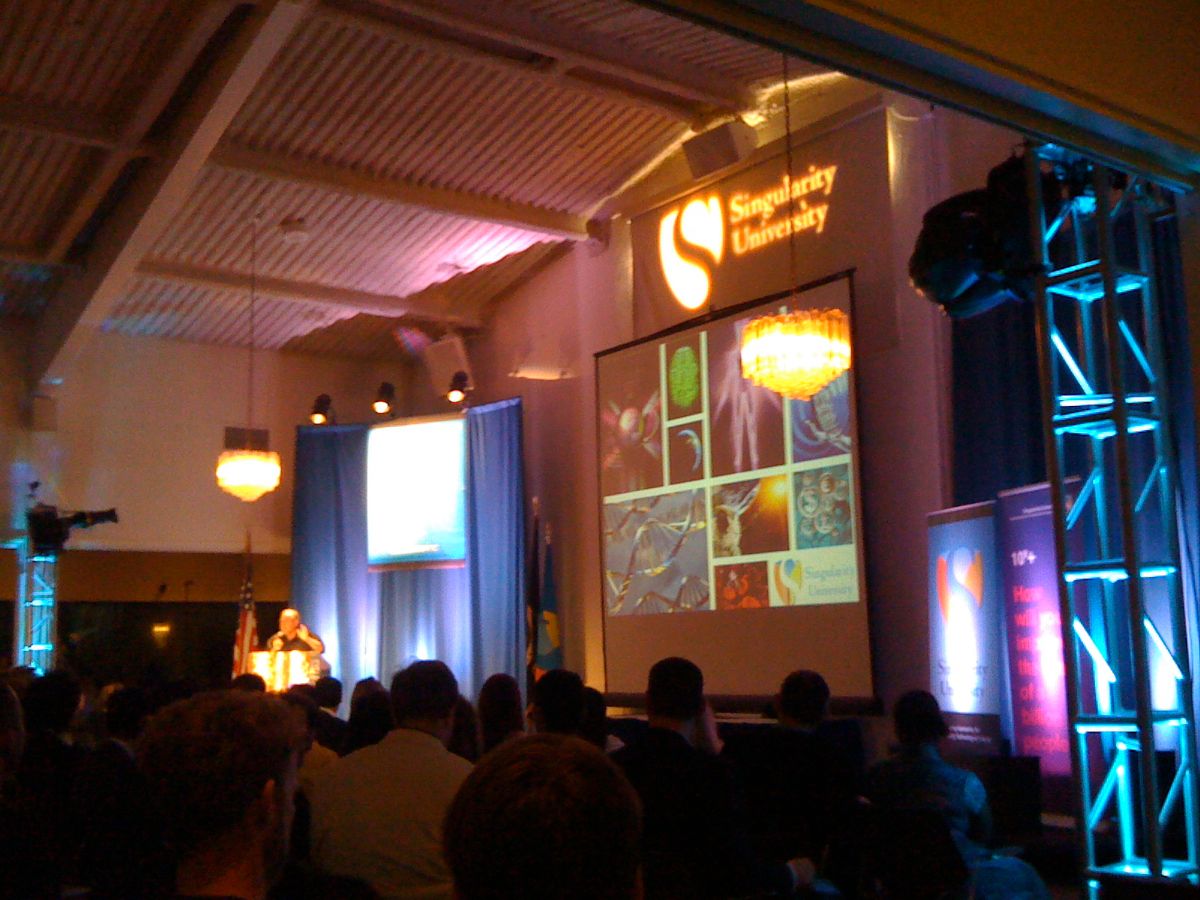
The stated goal of SU was to teach students to “think exponentially” in order to solve “humanity’s grand challenges.” The fee for the graduate course Shawna had done was $25,000, for ten weeks of study. There was also a nine-day, $15,000 “executive” course. Overall, I was skeptical. The philosophy that Kurzweil and Diamandis were peddling was dubious, especially since AI at that time was very far from being a viable form of computer science. And the quest for immortality just seemed like a pipe dream for aging white men.
Then again, if Shawna was any indication of the quality of students coming through the graduate program, then perhaps my gut instinct was wrong. She told me she was going to be a teaching fellow at SU this year, in medicine and neuroscience. It was all part of her ultimate plan to travel into space, she added.
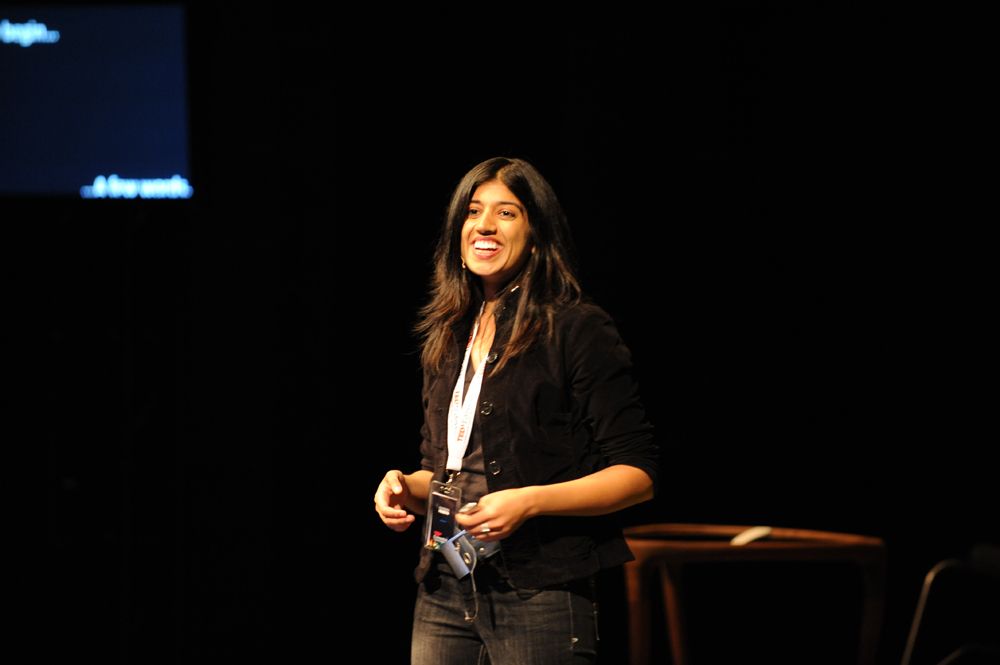
The speakers that day included Kurzweil, Diamandis, NASA astronaut Dan Barry, and the cartoonishly named Dr. Larry Brilliant, a former director of Google.org, the search company’s philanthropic arm. Larry Page, the cofounder of Google (a key sponsor of SU), briefly came onto the stage as well. “If I was a student, this is where I’d want to be,” he remarked.
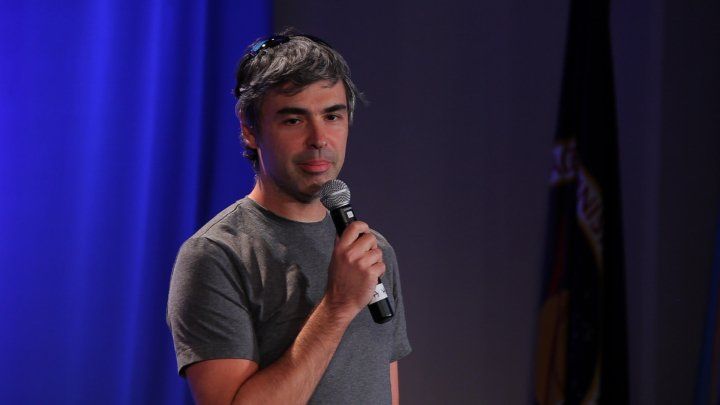
As the day wore on, I had to admit that I was impressed by the sheer wattage of intelligence onstage and sitting around me. I also, somewhat enviously, noted on Twitter that Kurzweil “got mobbed by a group of beautiful, smart women” after his speech.

It was an interesting day out, but years later I discovered that my initial instinct about SU had been correct. A 2018 investigation by Bloomberg News reported on alleged sexual and financial indiscretions. By that point, SU was a for-profit corporation—focused less on the graduate program and more on moneymaking conferences and executive education.
On the other hand, the state of AI technology is now vastly better than it was in 2010—so perhaps Kurzweil and Diamandis will get the last laugh. It’s too early to say as I write this, although it’s notable that the key advancements in AI over the past decade have come from graduates of traditional computer science universities—Stanford, Berkeley, and MIT—rather than from SU.
Foo Camp 2010
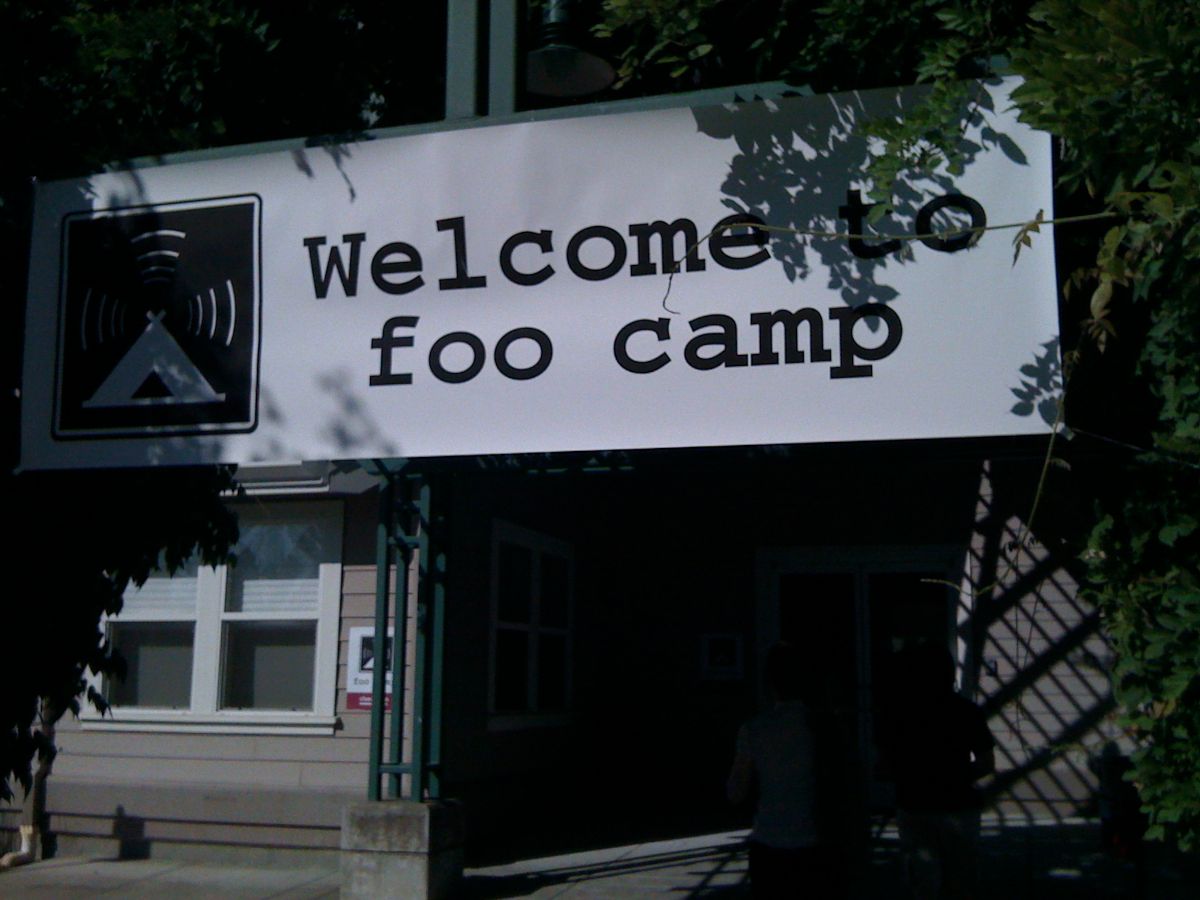
It had been a fun week of socializing in San Francisco, but I had one more event to look forward to before getting on a plane back home: Foo Camp.
My new Portland friend Nate DiNiro picked me up from my downtown hotel on Friday afternoon. We then picked up Amber Case at her friend’s place somewhere in the suburbs of San Francisco and began the one-hour drive north to Sebastopol on the 101.
If SU was a new Silicon Valley institution that wanted a fast-track to legendary status in 2010, then Foo Camp was already an industry legend. Foo stood for “Friends of O’Reilly,” and it was the ultimate insider gathering; you only went if you got an invitation from the man himself. It was an unconference, but also—as it said on the tin—it would be a camping trip, too. Nate was bringing along a tent that was big enough for him, me, and one other person. Amber would find some female bunkmates and do the same thing.

I wasn’t entirely sure about the camping part—I’d never been an outdoor person, despite living in New Zealand—but I had wanted to attend a Foo Camp for several years. The first Foo Camp took place in 2003, and I had received my first invitation in 2006, but I hadn’t been able to attend until this year.
We arrived at the O’Reilly campus around 5:30 p.m. The day was still hot and the sky blue and clear, so it felt like we were arriving for summer camp. The main O’Reilly office was a large, nondescript brown building, which we all filed into. In the emails leading up to the event, we’d been told there were some vacant office rooms available for bunking down—“on a carpeted floor”—but that most of us would have to pitch tents in the field out back. Nate and I soon made our way out to the field, which apparently used to be an apple orchard, and set up the tent on the rocky, uneven ground.
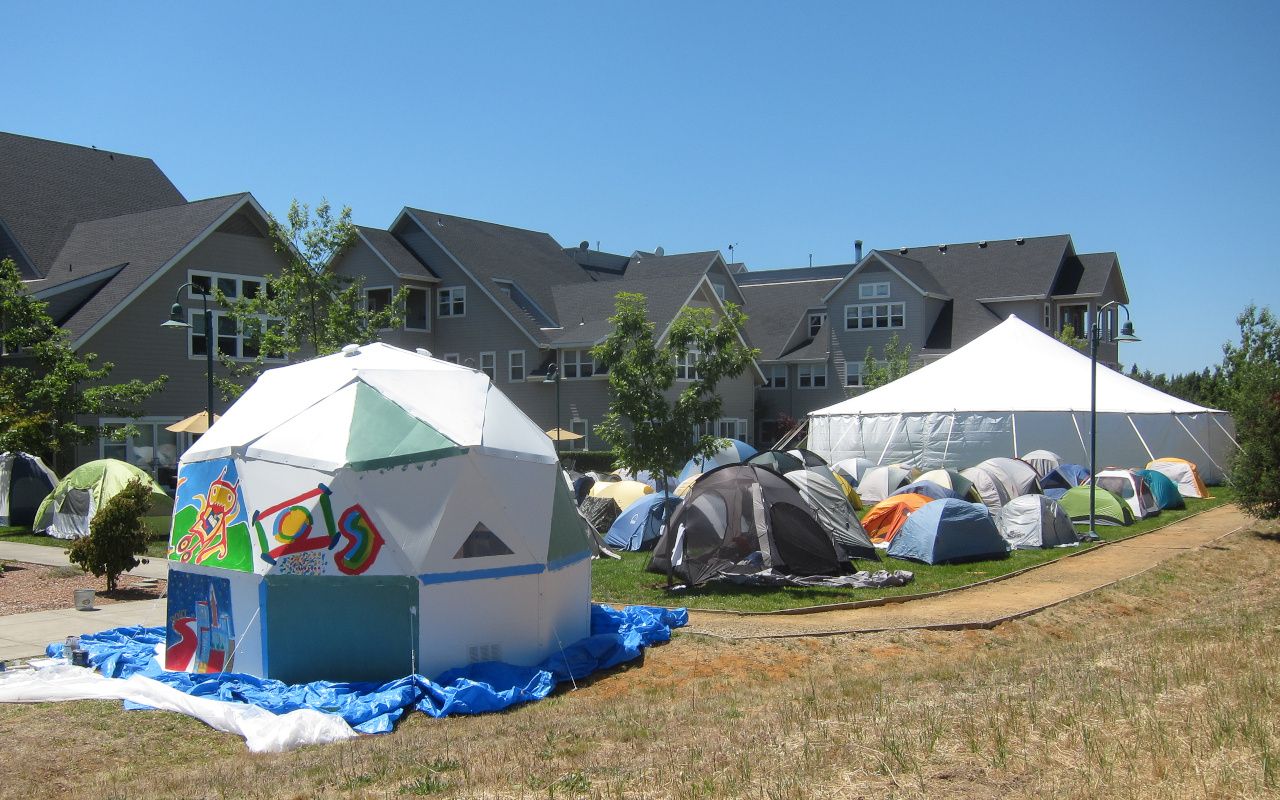
We then went back to the gathering area in the backyard of the office building. By this time most of the 250 or so attendees had arrived and were milling around, chatting and drinking beer from plastic cups. I saw a bunch of people I knew—Mike Arrington (who told me he wasn’t camping and instead had booked a nearby hotel), Robert Scoble, Scott Beale, Brady Forrest, Tom Coates, Kevin Marks, Dave McClure, and others. As usual with tech events at that time, most of the attendees were men, and most were white, too.
To my surprise, there were also a bunch of kiwis at the event. One was, of course, Nat Torkington, the O’Reilly employee from New Zealand I’d met on my first trip to the States in 2005. He also ran a kiwi Foo Camp, which I hadn’t yet been to. Also present were Courtney Johnston (a Wellington blogger in her early thirties who worked in the cultural industries), Roger Dennis (a likable tech consultant from Christchurch), and Rowan Simpson (cofounder of New Zealand’s eBay, Trade Me). And those were just the ones I knew!
Unlike me, my kiwi compatriots weren’t shy about contributing to the group conversations that were a big part of Foo Camp. In truth, it was jarring to constantly hear the kiwi twang throughout the weekend—I was used to being the only New Zealander at these US events, other than occasionally running into Nat.
I enjoyed the first evening and got to meet some fascinating new people. I was most thrilled to meet Kevin Kelly for the first time. Kelly, one of the founding editors of Wired magazine, was in his late fifties at the time. He’d written several books that I admired, although my current favorite wouldn’t be released until a few months later. Entitled What Technology Wants, its theme was that technology is a force of nature—Kelly called it “the technium.” I came away from our discussion filled with an almost spiritual sense of optimism about technological progress. Then I filled up my beer cup again and went to a session called “Why Minecraft is the new Lego & making some guy in Sweden $300,000/day.”

Later that evening, a bunch of the campers organized a game called Werewolf. I’d not heard of it before, but most of the others were very enthusiastic about it, so I hung out on the periphery of the group to learn more. It was a card game that also went by the name Mafia and involved “lynching” and “villagers.” Since I’d never been a fan of role-playing games, I just couldn’t wrap my head around it and so didn’t participate. Also, by this point I was already experiencing what Scott Berkun (another attendee) later called “social fatigue.”
Although I enjoyed unconference events, I was always grateful for the chance to unwind at the end of the day. After eight or so hours of nonstop socializing, I needed alone time to recharge my batteries—a classic introvert pattern of behavior. The problem with Foo Camp, though, was that the socializing continued into the night. I realized now why Mike had booked a hotel room (he’d once told me that he, too, was an introvert).

While the incomprehensible game roared on, I slipped away into the night and headed back to the tent. It was nearly midnight by this time, so I was tired. But I already knew I wouldn’t be getting any sleep in the hubbub surrounding me, a feeling that was only exacerbated by the backbreakingly uneven turf beneath the tent. I tossed and turned for what seemed like hours.
By the end of Foo Camp on Sunday, I was wiped out from lack of sleep and completely drained introvert batteries. Another attendee that year, Michael Nelson, wrote after the event that “getting an invitation to Foo Camp is a pretty big deal, and you’re reminded several times throughout the weekend that a return invitation depends on the quality of your contribution to Foo Camp.” As I traveled back to San Francisco that day with Nate and Amber, I realized that I probably wouldn’t get invited back. I had spoken only rarely during the unconference sessions, and the socializing in between was almost excruciating to me by the end of the event.

My flight back to New Zealand was at 9:00 p.m. that Sunday. It had been a long trip—New York and our third conference, Portland and hanging out with the RWW team, a whirl of dinners and drinks in San Francisco, and the geek camping that had finally exhausted me. I was looking forward to getting back home, even though I’d be returning to winter and my small, rented hovel. My plan was to begin my search for a proper house to buy in Wellington and spend some much-needed time with my 8-year old daughter.
Lead image: Foo Camp tents, by Joi Ito
This post is part of my serialized book, Bubble Blog: From Outsider to Insider in Silicon Valley's Web 2.0 Revolution. View table of contents.
Next up: 054. Social Media in 2010 and the Rise of Social Referrers
Buy the Book
My Web 2.0 memoir, Bubble Blog: From Outsider to Insider in Silicon Valley's Web 2.0 Revolution, is now available to purchase:
- Paperback, US$19.99: Amazon; Bookshop.org
- eBook, US$9.99: Amazon Kindle Store; Apple Books; Google Play
Or search for "Bubble Blog MacManus" on your local online bookstore.